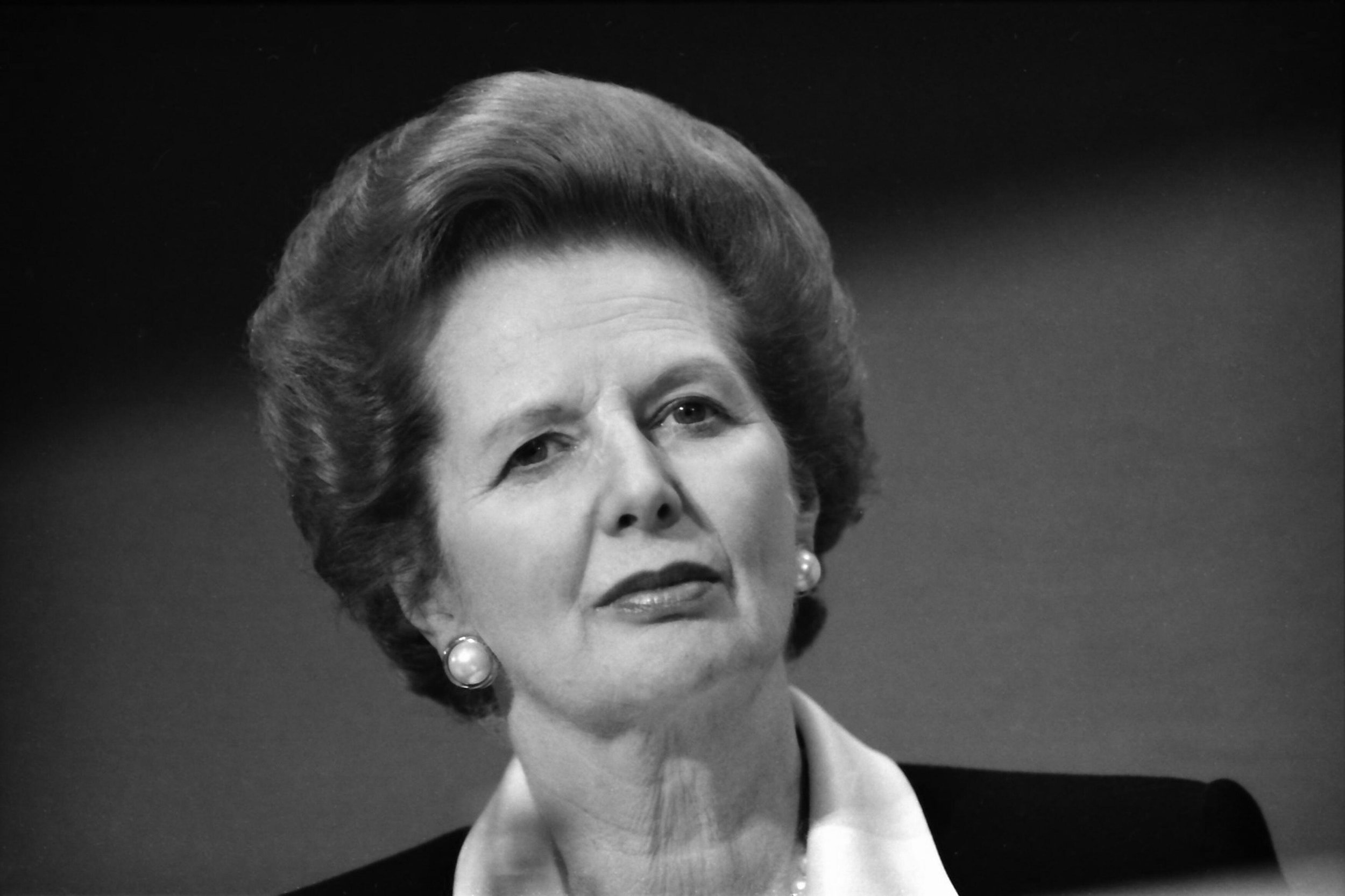Recent features
Remembering Capel Celyn
In 1965, the Welsh village of Capel Celyn was flooded to supply fresh water to Liverpool. It’s been a sore point ever since, provoking Welsh nationalist sentiment and an official apology from Liverpool City Council forty years later. Looking back, was this simply a case of predatory exploitation or can an argument be made that it was a rational decision based on the needs of the majority?
John P. Houghton
Trinity Mirror / Mirrorpix / Alamy Stock Photo
In 1965, a Welsh village was flooded to supply fresh water to Liverpool. It’s been a sore point ever since, provoking Welsh nationalist sentiment and an official apology from Liverpool City Council forty years later. Looking back, was this simply a case of predatory exploitation or can an argument be made that it was a rational decision based on the needs of the many?
Described by the BBC as “an idyllic Snowdonia village”, Capel Celyn in the Tryweryn Valley, North Wales was a quiet, rural settlement, home to 67 people, a general store, a post office, a cemetery, a school, and the Methodist chapel after which it was named. Reliant on the surrounding farmland for jobs, bucolic Capel Celyn seemed a world away from the kind of UK envisaged by the British Prime Minister, Harold Wilson when he announced his plan to transform these isles by unleashing the white heat of a new scientific revolution.
Pobol y Cwm / People of the Valley
According to Prof. Ed Atkins of the University of Bristol School of Geographical Sciences, the village typified a “certain type of Welshness” that was deeply connected to the landscape and, in a country losing its linguistic heritage, still predominantly Welsh-speaking. Liz Saville Roberts, the current MP for Dwyfor Meirionnydd described the inhabitants as an integral part of “one of the richest folk cultures in Europe”.
Yet for all its traditional, rural qualities, the village was actually moving into the modern, post-war world. Some of the villagers had radios and TVs and more were on the electricity grid. Capel Celyn was a living, breathing, working community. It was not a moribund settlement in terminal decline. And yet, I describe Capel Celyn in the past tense because, in 1965, the village and surrounding farmlands were deliberately flooded. Despite a decade of organised opposition and bitter resistance, Alderman Frank Cain of the Corporation of Liverpool pulled a lever and buried the place under 68 million tonnes of water.
The stated rationale at the time was that the city had started to run out of water because its economy and people were becoming “increasingly industrialised” and thankfully due to rising hygiene standards, “increasingly sanitary”. And so to meet this need, Capel Celyn became Llyn Celyn, or to use the English, Lake Celyn. The natural terrain of the Tryweryn Valley became a man-made reservoir.
The story of Capel Celyn is barely known in England. The name only appears in the media when, as with this summer, hot weather and drought conditions reveal “haunting” images from an underwater village. ‘Underwater’ invokes the myth of Atlantis and sounds much less disturbing than “drowned” or “flooded”.
In Wales, however, especially in the north, the name still resonates. In his 2017 Raymond Williams lecture, Welsh actor Michael Sheen listed the destruction of the settlement as being among the worst humiliations inflicted on the Welsh by the British in their entire history. The other national disgraces he rolled off included the construction of Edward Longshanks’ ‘Ring of Iron’ castles along the coast of North Wales to intimidate the locals into acquiescence; the brutal suppression of ironworkers opposing the lowering of their wages by British troops during the Merthyr Rising; and the quashing of the Rebecca Protests, which had seen struggling tenant farmers pushed to their financial limit by the imposition of road tolls. That’s the kind of company in which the drowning of Capel Celyn was viewed.
In this article, I’m going to look at the events running up the flooding, the resistance it provoked, and the lessons we can learn as water access and water shortages become increasingly seen as a source of conflict in a global climate emergency.
Thirst
The stated justification for the drowning of Capel Celyn was that Liverpool was running out of water for domestic and industrial use. The Corporation of Liverpool, the forerunner to the council, claimed that its existing supplies were on the brink of exhaustion. The city’s need for water, it was argued, could only be met, by “overdrawing” from existing reservoirs and “obtaining temporary bulk supplies of water from Manchester”. With the city’s industries growing and the replacement of old slums with new housing increasing the demand for clean water, the situation was, they said, one of “very considerable urgency”.
For those who argued that Liverpool needed to look beyond its current sources, the Tryweryn Valley was the obvious candidate. It was geographically close to Merseyside, was one of the largest water watershed catchment areas in Wales, and could be turned into a large reservoir with a single dam.
“Everyone deplores the fact that in the interests of progress sometimes people must suffer, but that is progress.”
Bessie Braddock, Labour MP for Liverpool Exchange
Of course, Capel Celyn was not the first, nor would it be the last, settlement to be sacrificed to meet a town or city’s demand for water. Welsh rivers had been dammed and re-directed since the 1800s. Llyn Efyrnwy (Lake Vyrnwy) was built as a reservoir in the 1880s by the Liverpool Corporation Waterworks Committee. This earlier scheme necessitated the flooding of Vyrnwy Valley and the submerging of the rural settlement of Llanwddyn. In the process, a church, two chapels, three inns, ten farmhouses, and 37 houses were dismantled.
By the 1950s, however, the context had changed. The Welsh nationalist and pro-independence movement, spearheaded by Plaid Cymru — Party of Wales, was in the ascendant. They chafed at the extent to which Welsh land and resources had been confiscated and appropriated over the centuries. By the end of World War Two, for example, fully 10% of Welsh land was owned by the Ministry of Defence, as cited by Dr Ed Atkins. It was hardly surprising then, that any new plans would meet with resistance.
The first the Capel Celyn villagers heard of the plans was in the winter of 1955 when the Welsh edition of the Liverpool Echo reported that the Corporation of Liverpool was considering flooding the valley to construct a reservoir.
However, it wasn’t until January 1957, that the Corporation held a meeting with the community in their own village. The Corporation claimed that there had been meaningful consultation, but campaigners and local authorities disputed this vehemently. They claimed that they were effectively presented with a fait accompli, which they had no power to reject or amend. As one of the scheme’s opponents in the House of Lords put it a few years later; “there were rumours… but we heard nothing more…until the complete scheme was there. I do not suggest that Liverpool is a "big bully," but that is the treatment a bully metes out.”
Various accounts suggest that in essence, officials’ contacts with villagers were not about consulting or listening. They were there to explain, in cold and technical terms, a decision that had already been made and would be enacted regardless of the villagers’ views.
Resistance
There was immediate and furious opposition to the plans.
Many were opposed on the grounds of natural justice. It was simply unfair to displace an entire community in the service of another. A more explicitly political form of opposition depicted the Corporation’s behaviour as another example of England’s colonial exploitation of Wales’ natural resources.
A pamphlet produced by Plaid Cymru stated that the decision was not driven by need but by greed; the Corporation wanted to take the water and sell it for a profit, they asserted. This point was also made by Welsh parliamentarians in the debates that, as we’ll soon see, became an integral part of this story.
The resistance on the ground took many forms. The villagers’ first act was to form the Tryweryn Defence Committee. The Committee organised an extensive letter-writing campaign, mobilising citizens across Wales, and supporters across the globe, to write to the Corporation, the Home Office, №10 Downing Street, and anyone else who might listen.
Dr Matthew Green, who covers Capel Celyn in the excellent Shadowlands: A Journey Through Lost Britain, describes the tone of the letters as “beautifully vitriolic”.
The Defence Committee organised a rally in Bala, the nearest town, and a public meeting in Cardiff, to raise awareness of the threat they faced. Captured by the local press, children from the doomed school held their own march through the village. The Committee also sent a delegation to try to speak at a meeting of the Corporation, but were heckled and eventually ejected from Liverpool Town Hall. A protest march in the city was met with similar hostility. Eurgain Prysor Jones was just three years old when she was taken on the march by her parents. As she recalls, “the reception we had in Liverpool was awful. People were spitting and throwing rotten tomatoes at us. It was an awful disappointment.”
In December 1956, Liverpool Corporation voted in favour of building the dam and flooding the valley. The Corporation, however, had no power over land in Wales. They would need the blessing of a higher power to get their way.
“That is progress”
Given the scope and scale of opposition, it would have been extremely difficult and time-consuming to go through the normal planning procedures to construct the reservoir. What Welsh politician would vote to drown a Welsh-speaking village to supply water to an English city?
The Corporation had to identify an alternative route to get the planning permission they needed to proceed. Like the water they would unleash on the village, they found a way around the obstacles in their path by working with friendly MPs from other parts of the UK to sponsor a Private Members’ Bill in parliament. This mechanism allowed individual MPs to put forward legislation, separate from the government’s legislative agenda.
The Tryweryn Reservoir Bill was presented to the House of Commons in January 1957. Passage of the bill into law would allow the Corporation of Liverpool to circumvent the Welsh planning authorities and obtain a Compulsory Purchase Order for all the land in the valley. When the motion came to a vote in July of that year, 35 of the 36 MPs representing Welsh constituencies voted against it. The 36th, the Conservative MP for Cardiff North, abstained.
“We knew our home would be gone, our chapel would be gone, our school would be gone and our friends would be moved to different parts… I think if it happened today we would have (been given) counselling for trauma.”
Eurgain Prysor Jones, resident of Capel Celyn
So what was the attitude of non-Welsh MPs? What of the Labour MPs who were, in theory at least, guided by notions of working-class solidarity across national boundaries? Bessie Braddock, the Labour MP for Liverpool Exchange, justified the decision on utilitarian grounds. “Everyone deplores the fact that in the interests of progress sometimes people must suffer, but that is progress,” she said.
The same pragmatic apologia was offered by another Liverpool MP, the Conservative Sir Victor Raikes. “If it is decided that it is in the interests of a large number of people [and] the rights of a small number of people are affected, then, subject to proper safeguards for the minority, the right of the majority must prevail,” he intoned.
Meanwhile, the Conservative MP, Henry Brooke, may have faced a conflict of loyalties. He was both the Minister for Housing and Local Government, and the Welsh Secretary. In the former role, he would no doubt support any measure to fuel the industrial resurgence of the North West. In the latter role, should he have been minded to stand up for the rights of the people of the valley? If he did have mixed feelings about the choice before him, he concealed them very well. Brooke voted for the bill. Its successful passage, on a vote of 166 to 117, left the Welsh authorities utterly impotent. and meant the Corporation of Liverpool could proceed without delay.
The villagers, their supporters and sympathisers, had petitioned, protested, and marched. They had taken their case to the Corporation of Liverpool and the House of Commons in London. Both times their pleas had fallen on ears that were not only deaf, but deliberately closed; their plight met with the sort of bureaucratic detachment and dry, etiolated language that justified their suffering in the cause of the common good.
“A darker turn”
Parliament’s decision triggered a second, more direct and aggressive wave of resistance. What else was there left to do after the inability of Welsh MPs to stop the plan had shown, as one article at the time put it, “how powerless Wales was in a political sense”?
The fight to halt the project took a darker turn. In 1962, shortly after evictions began, two men travelled from Gwent to damage heavy machinery on the site. Their fine of £50 was paid by supporters and they were greeted as heroes outside the court by Gwynfor Evans, the President of Plaid Cymru. In early 1963, with the construction of the dam well underway, three men formed Mudiad Amddiffyn Cymru — the Movement for the Defence of Wales. In their first direct action, they planted a bomb on the building site. The explosion destroyed a transformer and earned one of the men a year in jail.
Yet the work ground on.
Ghost town
Like a prisoner on death row, the valley had to be made ready for its end. As Dr Green puts it in Shadowlands, “The Tryweryn valley was systematically scoured of buildings, trees and graves.” The houses were dismantled. Bodies in the cemetery were disinterred, with families given the grim choice of paying to have their relatives’ remains removed, or doing it themselves. The church was deconsecrated, with some of the masonry used in the construction of the dam.
The final residents were evicted in the spring of 1963.
Some villagers did reconcile themselves to a different future. Green tells the story of John and Mabel Evans who agreed to move out of their home into a larger house that came with electricity and 34 acres of land. But they were very much in the minority. Of the 67 inhabitants, 48 people refused to do a deal with the Corporation and were moved against their will.
Eurgain Prysor Jones, the young girl we met earlier when she marched through Liverpool, looked back as an adult on the emotional impact of their ousting; “It was a very unsettling time… We knew our home would be gone, our chapel would be gone, our school would be gone and our friends would be moved to different parts… I think if it happened today we would have (been given) counselling for trauma.”
In September 1964, the basin’s floodgates were closed and the river was dammed.
The scene was set.
Here comes the flood
Astonishingly, given the hurt and anger they had provoked, the Corporation of Liverpool decided to make a day of the drowning.
It was Thursday 21st October 1965. The Corporation’s 400 invited guests were met with at least the same number of protestors who, wielding placards and megaphones, barracked the VIPs as they arrived in a convoy of official cars. The subsequent events would be farcical, even comical, if the context for the day was not so tragic. The protestors cut the microphone lead, so the dignitaries’ speeches were drowned out by chants and curses. The Lord Mayor of Liverpool had to duck and weave his way through a hailstorm of insults and projectiles. As one protestor recalled, "They were driving the dignitaries from Liverpool across the dam. Each time a car went past we'd lift it off the road and rock it. We ran down to the marquee and I saw a man pick up a brick and throw it.”
The planned forty-five-minute ceremony of self-congratulation was condensed to a chaotic few minutes before Alderman Cain pulled the lever and the deed was done.
Après le déluge
We can look at the legacy of Capel Celyn in a number of ways.
In practical terms, the water from the valley did flow to Liverpool. A general argument can be made that, when building essential infrastructure, the needs of the many should come before those of the few, as long as there are robust and democratic safeguards in place.
A decade ago, some residents’ groups and businesses in East London were moved, through compulsory purchase, and despite their stiff opposition, to make way for what became the London 2012 Olympic Park. Today, advocates of the HS2 high-speed rail line might argue that the negative impact on villages along the route is justified by the claimed benefits that the route will bring to millions of people in the North. As long, of course, as there is adequate compensation and engagement.
It is hard to make this argument in relation to Capel Celyn. Compensation was offered to the villagers, but only after a decision had been taken and without meaningful consultation with the residents or their representatives. When they tried to make their voices heard, they were rejected and ignored.
Most significantly, there remains controversy to this day as to the true scale of Liverpool’s need for water. In the parliamentary debate mentioned earlier, Thomas Jones, MP for Merionethshire, argued that “Liverpool is (involved) in this adventure… for the sake of profit out of the sale of water” and had “in some mysterious way” increased the amount of water it needed between readings of the parliamentary bill. His view was seconded by Goronwy Roberts, MP for Caernarvon, who argued that the bill would “confer on a single municipality… a monopoly on the resources of one of the greatest water catchment areas in Wales.”
In 2015, the retired Labour MP and cross-bench peer, Lord Elystan Morgan seemed to substantiate these claims. Appearing in a BBC documentary on the event, he claimed, “In the 10 years preceding, the population of Liverpool had decreased… Liverpool was selling industrial water to 24 other authorities, making a lot of money, and it wanted to maximise that profit. That’s what Tryweryn was about.”
Liverpool City Council had already issued an apology by this point. In 2005, a motion passed in the council chamber recognised “the hurt of forty years ago” and said sorry for “any insensitivity by our predecessor council at that time”. The apology was short and did not address the specific arguments about Liverpool’s need, or otherwise, for Welsh water.
Within Wales, the loss of Capel Celyn boosted the nationalist, independence cause. Plaid Cymru’s vote share in the 1951 general election was 0.7%. In 1959, it was 5.2%.
Cofiwch Dryweryn / Remember Tryweryn became an important political slogan of the Welsh nationalist movement. Tryweryn memorial wall just outside Llanrhystud.
Peter Brown, CC BY-SA 4.0 via Wikimedia Commons
Clearly, there will have been other events and trends shaping people’s voting behaviour. And non-nationalist parties tended to play down Capel Celyn’s political impact. The former Labour First Minister Rhodri Morgan described the idea that the events of the 1950s and 1960s catalysed the independence movement as a “little bit of nationalist myth-making.”
Nonetheless, it seems incontrovertible that the flooding of Capel Celyn was one important factor in the rise of Welsh nationalist and pro-independence sentiment, as well as the resurgence of the Welsh language.
Remembering
We cannot undo what was done to Capel Celyn. We cannot unmake the traumatic memories, re-fill the graves, or rebuild the demolished homes. But we can remember and remembering can be a powerful and political act. During the 1960s, two graffitied words started to appear all over Wales - Cofiwch Dryweryn. Remember Tryweryn. The most famous marking is found at Llanrhystud, near Aberystwyth.
The message needs to be heard far beyond Wales. As the world’s climate warms, and the global population continues to grow, water is becoming an increasingly precious resource. Wars fought over water may be common occurrences in the coming centuries; fought just as frequently as conflicts for land and oil have been in our time.
To avoid such a dystopian future, we need to support international measures like the UN Water Convention. This is a legal framework that facilitates cooperation on the use of water in an equitable and sustainable way across national borders.
The UK has signed up to the convention but has yet to ratify it. This is something we can change.
John P. Houghton is a freelance consultant in the fields of urban regeneration and economic development. He helps people to make their towns and cities even better places to live. John was born and raised in Kirkby. He tweets @metlines.
Share this article
What do you think? Let us know.
Write a letter for our Short Reads section, join the debate via Twitter or Facebook or just drop us a line at team@liverpolitan.co.uk
Referendum or bust – Liverpool’s last chance?
A discredited administration hamstrung by scandal. A weakened leader eyed by pretenders to the throne. A collapse of trust. And, underlying it all, a sense of drift and a loss of status in the world. For Boris Johnson’s Britain read Joanne Anderson's Liverpool. Both increasingly tottering on the precipice.
Liam Fogarty
A discredited administration hamstrung by scandal. A weakened leader eyed by pretenders to the throne. A collapse of trust. And, underlying it all, a sense of drift and a loss of status in the world. For Boris Johnson’s Britain read Joanne Anderson's Liverpool. Both increasingly tottering on the precipice.
Of course, it would be unfair to blame the city's current Mayor for more than a fraction of the woes afflicting Liverpool and its council. But her discarded pledge of a referendum to decide on whether to keep Liverpool's mayoral system was more than just another politician's broken promise. It was an affront to local democracy. The pitifully small response to the council’s subsequent governance consultation – just 3.5% of Liverpool residents replied - was inevitable. Launched in March, and conducted almost entirely online, the process was an artist's impression of a democratic exercise. The letter sent to each city household, directing its recipients to the Liverpool – Our Way Forward website, looked and read like a tax demand. Residents had 3 months to reply but a council taxpayer-funded "Have Your Say" supplement to promote the consultation was published with the Liverpool Echo on June 10th a mere ten days before the submission deadline. Perhaps if they were going to be this half-hearted they shouldn’t have even bothered. Its four vacuous pages contained plenty of room in which to set out the arguments for and against the various governance models on offer. Incredibly, it did not do so. An opportunity for meaningful engagement with Echo readers was spurned in what became a literal waste of space.
So what is to be done?
In his ground-breaking mayoral election campaign last year, as Liverpool absorbed the findings of the Caller Report into council misconduct, Independent candidate and eventual runner-up, Stephen Yip, called for a "re-set" of Liverpool City Council. He demanded top-to-bottom reforms in response to Caller's damning discoveries. The re-set phrase proved popular and was soon taken up by Labour's candidate, Joanne Anderson during her campaign. Once elected, however, she abandoned her commitment to resolve the mayoralty issue by means of a public vote, claiming a consultation would cost less than a full referendum which she deemed too expensive to justify. Since Joanne’s election, we have seen backsliding on the promises of more transparency and scrutiny of council business. Caller’s recommendation for a significant reduction in the number of councillors has been ignored, with the current 90 councillors being reduced merely to 85. Meanwhile, government-appointed commissioners now report that in several respects our council is going “backwards not forwards” in dealing with the issues it faces.
The loss of millions of pounds thanks to a botched energy contract showed systemic failings were not confined to the departments excoriated by Max Caller. There’s talk of more commissioners being drafted in, and more departments falling under their iron fist as skeletons continue to tumble out of closets. Not so much a re-set, then, as a return to politics as usual in Liverpool.
Stephen Yip and I agree that the first step towards an actual re-set is to let the people of Liverpool decide how their city should be led. Liverpool is local democracy’s ‘black hole,’ the only major city in England to have repeatedly denied its residents the chance to vote on how it should be run. The idea that Liverpool's citizens should be able to decide whether to keep or scrap the mayoral system is anathema to the control freaks at the Town Hall. Our politicians won't give us the mayoral referendum we are entitled to unless they are forced to.
Former Independent Mayoral Candidates, Liam Fogarty and Stephen Yip, launch ReSet Liverpool, a campaign to force Liverpool City Council to run a full referendum on city governance.
ReSet Liverpool
That’s why we are launching ReSet Liverpool, a petition-led campaign to give the people of the city the referendum they were promised. We reject the council's attempt to take such a huge decision on the city’s governance by itself. Options for the future running of Liverpool should be put directly to its residents at the ballot box.
Our petition aims to secure the 16,500 signatures (5% of the city's electorate) needed to trigger a referendum on whether Liverpool should retain the post of directly elected Mayor. A referendum held next May to coincide with scheduled elections for a Mayor and local councillors would come at minimal additional cost.
The final say on this issue should belong to the people, not politicians. It’s a matter of principle. Self-serving attempts to sideline the electorate are destructive. They weaken the already-strained connection between the people of Liverpool and their local council and lead to greater cynicism and indifference.
“The final say on this issue should belong to the people, not politicians. Options for the future running of Liverpool should be put directly to its residents at the ballot box.”
Without a referendum, Liverpool’s politicians are likely to revert to type. If they do move to abolish the mayoralty without public consent, then the simmering – and largely unreported - power struggles inside the council’s majority Labour group will burst open, absorbing the time and energies of all those involved. Mayor or no Mayor, in May 2023 every Liverpool council seat will be up for grabs on new electoral boundaries. As what is now 30 wards morphs into a whopping 70 smaller ones, once safe council positions will be under threat as councillors from the same party will be forced to compete with each other. The jockeying to be selected as candidates has already started and local parties’ fratricidal tendencies will be given full rein. The ward elections themselves will provide ideal conditions for the kind of hyper-local political warfare that appeals to party activists but no-one else. The chances of such a process producing a clear city vision, strong civic leadership and a coherent policy platform will be remote. Not for the first time, Liverpool politics will be all tactics and no strategy.
For ReSet Liverpool, a referendum on the mayoralty is the very least the people of this city deserve. May be it can also be the start of a broader campaign to reform our council and renew our city. If you are registered to vote in Liverpool, download a petition form (HERE) and if they live in Liverpool, get your friends, family and neighbours to sign up. Together, we have a chance to help kick-start that overdue process of civic renewal. It could be the last chance we’ll get.
Liam Fogarty is co-founder of ReSet Liverpool. A journalist, broadcaster and lecturer, he ran as an independent in Liverpool’s first Mayoral Election in 2012, finishing second.
Further Information
To find out more about Reset Liverpool and to download a copy of the petition, visit www.resetliverpool.org. Note: Only Liverpool residents over the age of 18 who are registered to vote can sign the petition. Completed petition forms should be returned to:
Reset Liverpool
301 Tea Factory
Fleet Street
Liverpool
L1 4DQ





































